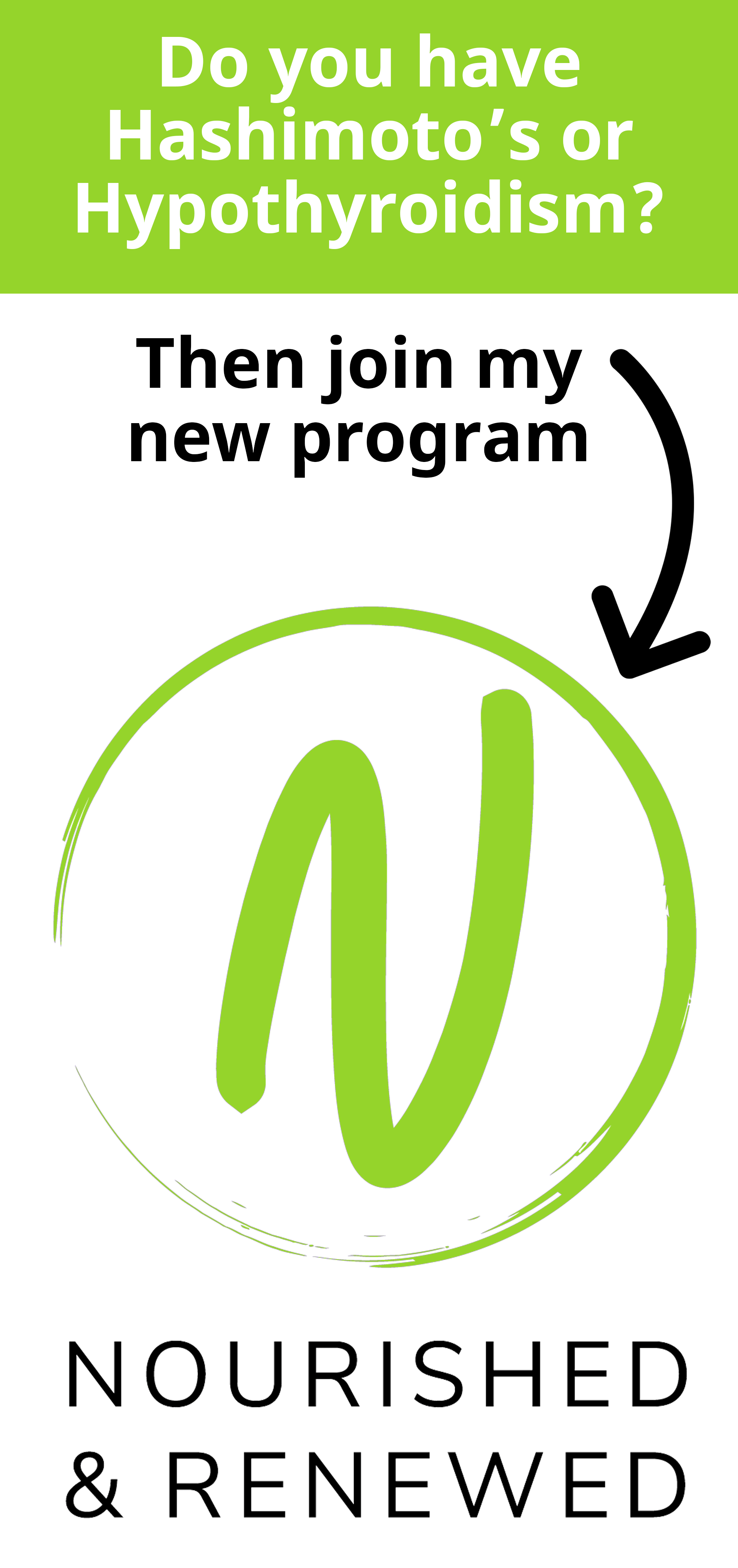I Hate Halloween
Growing up, Halloween was my favorite holiday. I loved the fall season, the costumes, trick-or-treating, and of course, candy. Because I was a normal American kid.
In the 1970s, sugar was just sugar. Cane sugar. And, I got to have it once in awhile. And, it was heavenly.
Decades ago, protesting sugar wasn’t a “thing.”
That is partly due to the fact that sugar wasn’t manufactured in to every single food product on the planet.
Also, sugar wasn’t as prevalent in society during commonplace activities. (I am sure candy was not a reward for pooping on the potty in most 1970s households. LOL!)
Honestly, when I was a trick-or-treater, the biggest threat of Halloween was that a weirdo might put a razor blade in my Snickers bar (that is what my mom worried about, anyway).
Today, sugar. is. every. where.
And, now that I am a nutritionist-mom, I am also a major Sugar Scrooge.
I hate Halloween. And, I don’t care who gets mad at me for it, including my kids.
The 31-Day Sugar Holiday
Here’s the rub:
Halloween starts about 14 days before the actual Halloween holiday. With fall festival at school, Halloween costume parties, and Halloween-themed events literally everywhere we go for days on end, it’s a MONTH OF HALLOWEEN.
Even my daughter’s gymnastics center will give out Halloween “goody bags” at some point in October. And, they have a sign on their door: “health club.”
What the?
Not to mention store shelves are LOADED with neon-colored, junk-laden, chemical-infested, Franken-foods starting as early as mid-August. (Seriously, we have all walked in to a drug store and seen the candy displays before school even starts. Ugh!)
I am like “why, people, why?”
And, after Halloween, the candy buckets last for days, weeks, months. (Until I start slowly shuffling it off to the trash dumpster after the kids go to bed.)
Nonetheless, Halloween candy is still around when the Christmas stockings are getting filled.
Halloween and Christmas candies, intermingled, rot on our one “treat shelf” in the pantry long enough to get bumped out by the Easter Bunny loot.
And, in between all those sickly sweet holiday “goodies” are the treats from countless birthday parties, school celebrations, weekends at grandma’s, etc.
Are you feeling me yet?
It’s no wonder I am a Super Sugar Cop. I have to be.
I have to keep the sweet stuff in check so my kids don’t suffer cavities, diabetes, obesity or worse - just because they are a kid in this country.

Some Facts on Sugar Consumption
Nutrition experts (not just me) and sugar-free activists (again, not just me) are highlighting that there is a major “problem” in our society with kids and sugar.
In fact, the average kid under twelve consumes 49 pounds of sugar per year, according to the USDA Economic Research Service.
That is too much. Waaaaayyy too much.
(I mean, I am freaking out over that statistic! Everyone should be freaking out!)
However, the problem isn’t really just about sugar.
Other YUCKY Ingredients in Today’s Processed Sweet Foods
HFCS
There is a very sweet ingredient found in many foods available to children: High Fructose Corn Syrup (HFCS). Quick facts:
- HFCS has been linked in a variety of research studies to common health conditions such as diabetes, obesity, heart disease, tooth decay and more.
- HFCS is not processed by the body in the same way as sugar; in fact, it goes through the liver. An abundance of HFCS in the diet may lead to non-alcoholic fatty liver disease.
- HFCS often contains contaminants like mercury.
- Most HFCS comes from genetically modified (GMO) sources of corn.
Food Dyes
Another big concern with candy and other sweet foods are the multiple chemical colorings and food dyes added to these foods. Quick facts:
- Synthetic food dyes are the most likely suspects when it comes to triggering behavior problems in children, even if they only eat a small amount.
- Common symptoms such as: irritability, restlessness, sleep disturbance, aggression and hyperactivity are also reported with children who are sensitive to these ingredients found in sweet foods.
- Other products that may contain food dyes include: vitamins, artificial juice, cereal, toothpaste, packaged foods like rainbow-colored Goldfish crackers.
GMOs
Most sugar-sweetened foods are made with Genetically Modified Organisms (GMOs), like from sugar beets and HFCS (from corn). Quick facts:
- In more than 60 countries around the world, including Australia, Japan, and all of the countries in the European Union, there are significant restrictions or outright bans on the production and sale of GMOs.
- In the U.S., the government has approved GMOs based on studies conducted by the same corporations that created them and profit from their sale.
- In the U.S., GMOs are in as much as 80% of conventional processed food.
- A growing body of evidence connects GMOs with health problems, environmental damage and violation of farmers’ and consumers’ rights.
Aspartame
Please don’t even get me started about aspartame. Oops, too late. I am started and I am pissed. I mean, really pissed off about this common ingredient. Quick facts:
- Aspartame is found in thousands of common foods: diet sodas, gum, commercial cereals, granola bars, candies, baked goods, and many more.
- The research and history of aspartame dangers is conclusive as a cause of illness and toxic reactions in the human body.
- Aspartame is the common denominator for dozens of different symptoms and diseases, such as neurological disorders, cancers, endocrine diseases and more.
- Aspartame side effects depend on your genetic individuality and affects many people differently.
- Phenylalanine is a hidden dangerous chemical found in aspartame. Most consumers don't know much about it. Phenylalanine is a “neurotoxin” and excites the neurons in the brain to the point of cellular death - meaning brain cells go “crazy” and then die really quickly.
Detrimental Effects of Sugar on Children
Please don’t let anyone tell you that sugar “has no effect whatsoever” on your child. Well-meaning relatives, other parents, even medical professionals are entitled to their opinion.
However, there is ample evidence that today’s manufactured sweet foods do have harmful effects on children. And, I don't just mean dental cavities.
In particular, children’s bodies, because they are young, growing and developing, are most prone to the negative side effects of these foods.
Sugar impacts immune system function
According to a 1973 study done by Loma Linda University, white blood cells are 40 percent less effective at killing pathogenic bacteria when a person consumes 100 grams of sugar.
This is about as much as found in a liter of soda. And, sadly, this is about as much sugar as most American kids consume in one day.
Sugar impacts your white blood cells by competing for space in those cells with Vitamin C.
When Linus Pauling did research in the 1970s to find out how the body uses Vitamin C, he discovered that white blood cells need Vitamin C to destroy bacteria and viruses.
Sugar and Vitamin C are similar in their chemical structure. So, sugar “mimics” Vitamin C and replaces it in the white blood cells.
So, the more sugar in your system, the less Vitamin C can get into your white blood cells. Sugar reduces immune system ability to fight off infection, resulting in a weakened defense and possibly more illnesses.
Sugar's impact on learning
Researchers from the University of Southern California once did a study where they fed adult and adolescent rats beverages with sugar levels comparable to that found in ordinary sodas.
After a month, the adults showed normal brain function.
However, the adolescent rats showed reduced memory and learning capacity.
In addition to declined memory levels, these rats also had inflamed hippocampi. The hippocampi is the part of the brain which is crucial for forming memories and organizing and storing memories. AKA: learning.
If sugar can impact young rats in this way, what’s it doing to our kids?
Addictive qualities of sugar
Sweet foods are highly desirable due to the powerful impact sugar has on the reward system of the brain.
Through various studies, it appears sugar may have addictive qualities because of the impact of sugar on this brain reward pathway system.
The mesolimbic dopamine system of the brain is precisely where the neurotransmitter dopamine is released by neurons in response to a rewarding event.
Activation of this system leads to intense feelings of reward that can result in cravings and addiction.
Activating this system makes you want to carry out the behavior again and again, because it feels so dang good.
And sugar ALLOWS for the release of dopamine into the bloodstream. Eating that dark chocolate feels good, right? We have all been there.
Drugs such as cocaine, amphetamines and nicotine also hijack this brain system. Yikes.
Have you heard “Sugar is as addictive as cocaine?” Now you know why.
Sugar affects mood, sleep & behavior
Back to neurotransmitters…
Sugar-rich foods can also mess with the neurotransmitters that help keep our kids’ moods stable.
Consuming sugar stimulates the release of the mood-boosting neurotransmitter serotonin.
Constantly over-activating these serotonin pathways can deplete our limited supplies of the neurotransmitter, which can contribute to symptoms of depression, according to Dr. Datis Kharrazian, functional medicine expert and author of Why Isn’t My Brain Working?.
Chronic sugar consumption leads to high blood sugar levels in the body. Both have been linked to inflammation in the brain.
And as some research has suggested, neuroinflammation may be one possible cause of depression.
Teenagers may be particularly vulnerable to the effects of sugar on mood.
A study on adolescent mice, conducted by researchers at Emory University School of Medicine, found a diet high in sugar to contribute to depression and anxiety-like behavior.
Sugar lowers nutrient consumption completeness
Sugar-sweetened foods eventually edge out healthier fare from a child's diet.
Pennsylvania State University researchers found that the more added sugar children had in their diets, the less likely they were to eat quality protein from animal sources, whole grains, vegetables, fruits, and dairy.
In essence, consuming too much sugar leads to a state of malnutrition because kids eat too many calories (from sugary foods) but not enough nutrients (from healthy whole foods).
Further, with too much sugar in the diet, children may struggle to accept other flavors, such as the bitter taste of many green veggies.
And, therefore, sugar overload may prevent children’s taste buds from maturing.
So what we see is that over time, kids won't develop the ability to appreciate, let alone eat, a variety of foods.
In Case You Aren’t Convinced About Sugar Yet: A Kid Case Study
In my nutrition practice I work with all kinds of families and kids.
One thing that is pretty consistent with kids across the board is that little ones are all consuming too much sugar.
I know moms and dads who do their very best to provide nutritious foods for their kiddos, but somehow society wins out and kids are still coming home with candy wrappers in their pockets.
To some degree, unless our values around sugar and nutrition change as a society (unlikely to happen any time soon), sugar is going to be a constant nuisance.
That is the bad news.
The good news is that every little step you take to reduce sugar from your family’s diet benefits your kids’ overall health.
Caley’s Story
A few years ago, I worked with a mom and her daughter (“Caley”) who was just 6 years old.
Due to a complex digestive condition, the child had a very difficult time eating a variety of foods. The child’s parents - having the best intentions - had resorted to giving Caley lots of sweet foods.
The reason: they seemed easier to digest, had a positive impact on her weight and growth and even lightened the child’s mood, despite her illness.
Until it didn’t work anymore.
When the mom and Caley came to me, Caley was full-on sugar addicted. Her moods were unstable, her skin and immune system were suffering greatly, she had gained unwanted weight around her middle, and she was seriously struggling with her behavior in school.
Caley’s typical daily diet consisted of pancakes with syrup for breakfast, a sweetened yogurt and PB&J for lunch.
Candy and treats were common on the way to and from doctor’s appointments, given to soothe her sorrows and belly pain.
Caley’s dinner was barely any protein and never, ever a vegetable. Oh, and ice cream after dinner was the norm.
Something had to change
The situation they were in with Caley was a heart-breaking scenario. And, the mom knew in her heart that something had to change.
A review of Caley’s food journal told us what we needed to know: Caley consumed approximately 110 grams of sugar per day.
Lab tests from her pediatrician’s office confirmed that she was dangerously high in glucose. She also had other borderline values.
Food intolerance testing was proof that Caley was riddled with inflammation.
These data points helped mom get back on track mentally, and make a strong commitment to changing the way Caley was eating.
We worked together to slowly wean Caley off the processed, refined sweet foods in favor of more naturally-sweetened foods and homemade treats. We incorporated fruit and honey as sweet treats when necessary.
Mom was a sleuth at finding and trying new recipes which had a sweet flavor but not a lot of sugar. The family found a new way of cooking, eating, rewarding, comforting and loving each other - without sugar at the forefront.
Over time, Caley broke her sugar addiction and her blood sugar levels stabilized.
Caley’s weight normalized for her height and age. Her eczema cleared up. She slept 10 hours each night. And, most importantly for her mom, her mood was significantly improved.
They still had to see a specialist for the digestive diagnosis, but even Caley’s tummy symptoms improved greatly.
Top Ten Tips for Surviving Halloween Candy Overload
Are you ready to limit the damage?
If Halloween treats and other sweets are part of your family culture, these top ten tips can help keep sugar under control.
- Feed them first. Be sure your kids have a healthy, balanced, protein-packed meal and full stomachs before consuming cake, cookies, cupcakes, candy, etc.
- Consider a swap: let kids keep a few pieces of candy and turn the rest into a candy fairy or “Switch Witch” who will replace the candy with a non-food reward or healthier sweet alternatives (dark chocolate!)
- Movement – get kids moving their bodies! Sing, dance, hula hoop, make crafts, jump, run, play!
- Toss out the worst offending sugary foods in your household. If you cannot pronounce the ingredients, please do not eat it.
- Set a limit on the quantity of sugary foods kids can eat per day.**
- Let kids eat treats with their meal so that the healthier foods and nutrients help to counter-balance the sugar and chemicals.
- Keep the sweets out of sight (and out of mind).
- Throw out a few Halloween candies or junk foods each day and clean up the pantry at the end of each week.
- Make your own healthy sweet treats. I have an entire Pinterest board loaded with tried-and-true naturally-sweetened homemade treats. Please, indulge.
- The best way to encourage healthy eating is to eat well yourself.
**NOTE: For my own kids, we try to limit sugar to under 30 grams per day. That is equivalent to one 8 ounce vanilla-flavored organic whole milk yogurt, one low-glycemic granola bar like KIND bar, and one 8 ounce organic juice box. Sometimes we allow a little more on weekends or holidays.
Halloween Can Be Fun Again!
There’s a way to celebrate Halloween and still have fun. You can find healthier/natural candies at organic/natural grocery stores.
Also note: there are many non-food Halloween treats which are great options for families with food allergies.
- Endangered Species Organic Chocolate “Bug Bites”
- Justin’s Mini Milk Chocolate Peanut Butter Cups
- Unreal Candy Coated Milk Chocolates
- Surf Sweets Sour Berry Bears
- YumEarth Organic Candy and Lollipops
- Alter Eco Salted Caramel Truffles
- Organic Fair-Trade Hot Cocoa Packets
- Make a jack-o-lantern face using a Sharpie pen on a fresh tangerine
- Halloween stickers, pencils, erasers
- Miniature toys like Slinkys, bouncy balls, bracelets, Pokémon cards, etc.
- Glow in the dark wands (this is what we give out to trick or treaters at our house!)
Still Not Sure How to Cut Your Kids Off From the Sugar Monster?
I get that this sugar detox for your kids and family is a painful prospect.
I know your kids - and probably even your spouse - will revolt.
I know you will find yourself in the pantry at some point eating a peanut butter cup and wondering why the hell this even matters. (Been there, done that.)
But, I can tell you that life on the other side of Candy Land is saner, healthier, happier and easier.
This is not an all-or-nothing-proposition.
If you need guidance on going low-to-no-sugar for your kids (or you?), we can work together on the hard stuff and you can totally make me the bad guy. 😉








